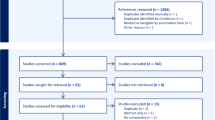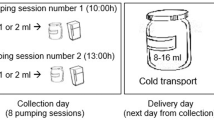Abstract
Objective:
Fortification of human milk for preterm infants is necessary and a common newborn intensive care practice. Currently, acidified human milk as part of a human milk fortifier is being fed to preterm infants. However, there are little data on the acidification effects on mother’s milk. The aim of this study is to determine the effects of acidification on human milk’s cellular and nutritional composition.
Study Design:
One hundred milk samples were collected from eight mothers who had infants in the neonatal intensive care unit. All milk samples were frozen at 4 °C. The frozen samples were thawed and divided into two equal aliquots, control and acidified. The control milk sample had its pH determined while the other sample was acidified to pH 4.5. Each milk sample was examined for pH, white cells, total protein, creamatocrit, lipase activity and free fatty acids.
Result:
Mean pH of the human milk control was 6.8±0.1 (M±s.d.) with the acidified milk at 4.5±0.1. Acidification caused a 76% decrease in white cells, a 56% decrease in lipase activity and a 14% decrease in the total protein but a 36% increase in the creamatocrit.
Conclusion:
Acidification of human milk causes significant changes of the milk’s cellular and nutritional components that may not be beneficial to preterm infants.
This is a preview of subscription content, access via your institution
Access options
Subscribe to this journal
Receive 12 print issues and online access
$259.00 per year
only $21.58 per issue
Buy this article
- Purchase on Springer Link
- Instant access to full article PDF
Prices may be subject to local taxes which are calculated during checkout
Similar content being viewed by others
References
American Academy of Pediatrics. Breastfeeding and the use of human milk. Pediatrics 2005; 115: 496–506.
Schanler RJ . Evaluation of the evidence to support current recommendations to meet the needs of premature infants: the role of human milk. Am J Clin Nutr 2007; 85 (2): 625S–628S.
Schanler RJ . The use of human milk of premature infants. Pediatr Clin North Am 2001; 48: 207–220.
Baker RD . Infant formula safety. Pediatrics 2002; 110: 833–835.
Smith PK, Krohn RI, Hermanson GT . Measurement of protein using bicinchoninic acid. Anal Biochem 1985; 150: 76–85.
Lucas A, Gibbs JA, Lyster RL, Baum JD . Creamatocrit: simple clinical technique for estimating fat concentration and energy value of human milk. BMJ 1978; 1: 1018–1020.
Moore A, Ansell C, Barrie H . Metabolic acidosis and infant feedings. BMJ 1977; 1: 129–134.
Lardner A . The effects of extracellular pH on immune function. J Leuk Biol 2001; 69: 522–530.
Morriss F, Brewer ED, Spedale SB, Riddle L, Temple DM . Relationship of human milk pH during course of lactation to concentrations of citrate and fatty acids. Pediatrics 1986; 78: 458–464.
Berseth CL, Walsh K, Moore N, Harris C, Mitmesser SH A new liquid human milk fortifier improves linear growth in preterm infants. 44th annual meeting of the European Society of Paediatric Gastroenterology, Hepatology and Nutrition. Sorrento, Italy, 2011 (abstract PA-N-0024).
Ballmer PE, McNurlan MA, Hulter HN, Anerson SE, Garlick PJ, Krapf R . Chronic metabolic acidosis decreases albumin synthesis and induces negative nitrogen balance in humans. J Clin Invest 1995; 95: 39–45.
Ballabriga A, Conde C, Gallart-Catala A . Metabolic response of prematures to milk formulas with different lactic acid isomoers or citric acid. Helv Paediat Acta 1970; 25: 25–34.
Ofterringer K, von Rimscha M, Hagge W, Weber H . Studies on the influence of nutrition on acid-base metabolism in young infants. I. The behavior of pH, standard bicarbonate and pCO2 in blood and acid excretion in the urine of normal premature infants during feeding with unacidified and lactic acid acidified cow-milk mixtures. Monat Kinderheilkd 1966; 114: 341–344.
Olivecrona T, Hernell O . Human milk lipase and their possible role in fat digestion. Padiatr Padol 1976; 11: 600–604.
Williamson S, Finucane E, Ellis H, Gamsu HR . Effect of heat treatment of human milk on absorption of nitrogen, fat, sodium, calcium, and phosphorus by preterm infants. Arch Dis Child 1978; 53: 555–563.
Hudson GJ, Gerber H, John PMV . Creamatocrit procedure versus triglyceride analysis: a comparison of methods for the determination of human milk fat in epidemiological studies. Int J Food Sci Nutr 1979; 33: 283–287.
Shalabi SI, Fox PF . Influence of pH on the rennet coagulation of milk. J Dairy Res 1982; 49: 153–157.
McMahon DJ, Du H, McManus WR, Larsen KM . Microstructural changes in casein supramolecule during acidification of skim milk. J Dairy Sci 2009; 92: 5854–5867.
Poets CF . Gastroesphageal reflux: a critical review of its role in preterm infants. Pediatrics 2004; 113: e128–e132.
Grant L, Cochran D . Can pH monitoring reliably detect gastro-oesophageal reflux in preterm infants? Arch Dis Child Fetal Neonatal Ed 2004; 85: F155–F158.
Marieb E, Hoehn K . The digestive system In: Marieb E, Hoehn K, (eds). Human Anatomy and Physiology 8th edn. Benjamin Cummings Publisher: San Francisco, 2010, pp 873–874.
Author information
Authors and Affiliations
Corresponding author
Ethics declarations
Competing interests
The authors declare no conflict of interest.
Rights and permissions
About this article
Cite this article
Erickson, T., Gill, G. & Chan, G. The effects of acidification on human milk’s cellular and nutritional content. J Perinatol 33, 371–373 (2013). https://doi.org/10.1038/jp.2012.117
Received:
Revised:
Accepted:
Published:
Issue Date:
DOI: https://doi.org/10.1038/jp.2012.117
Keywords
This article is cited by
-
Human milk pH is associated with fortification, postpartum day, and maternal dietary intake in preterm mother-infant dyads
Journal of Perinatology (2023)
-
The effects of human milk fortification on nutrients and milk properties
Journal of Perinatology (2017)
-
Association of metabolic acidosis with bovine milk-based human milk fortifiers
Journal of Perinatology (2015)



